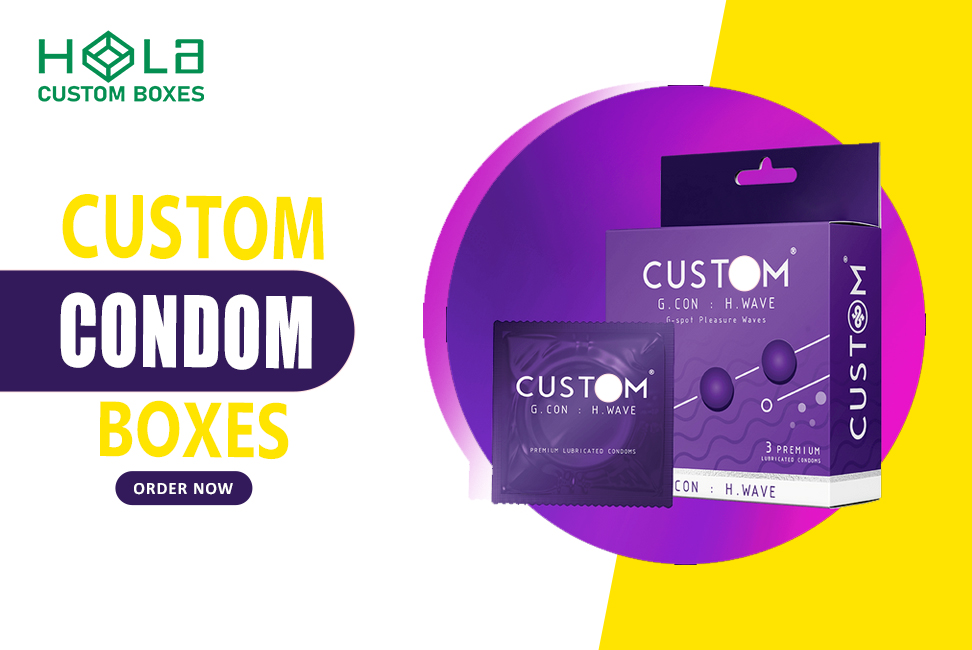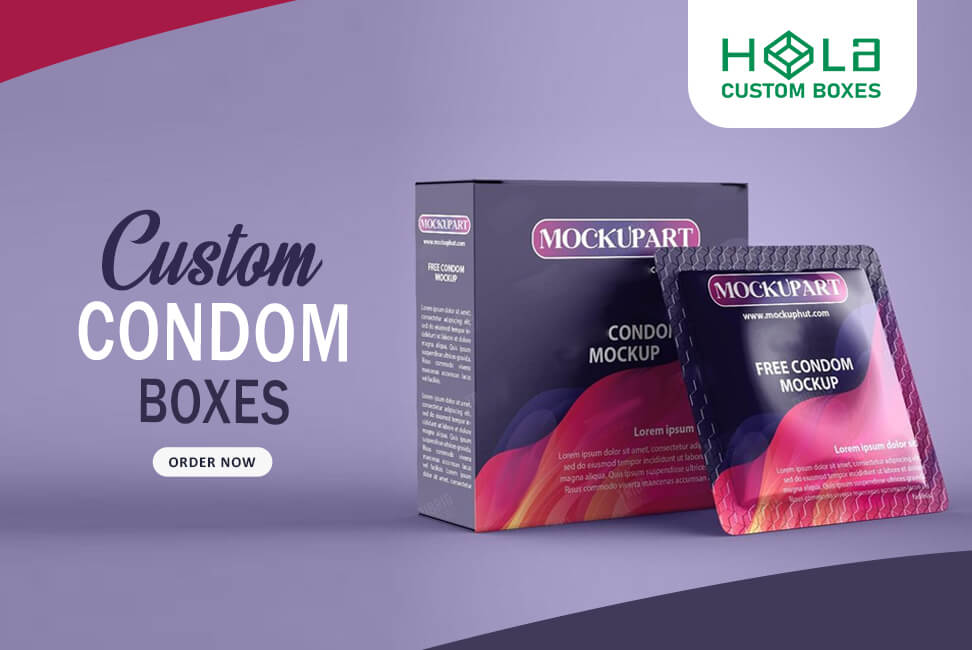Cardboard Vs Plastic Condom Boxes: Which One Is Better For The Environment?
2025-12-06 14:13:44
If you care about reducing your environmental impact, you may have switched to reusable straws, bags, and water bottles. But have you given any thought to the packaging of your condoms? Most condoms come in either cardboard or plastic boxes, but which is better for the environment?
It's a question worth considering since condom use is essential to safe sex practices. While both cardboard and plastic boxes have their advantages, each also has its downsides regarding environmental impact. In this article, we'll take a closer look at the pros and cons of both packaging types and explore which is more sustainable in the long run.
Reduce footprint with recyclable cardboard condom packaging.
The Environmental Impact of Condom Packaging

Exploring the environmental impact of condom packaging reveals important considerations for those seeking to make environmentally conscious choices. While both cardboard and plastic are commonly used materials for condom boxes, they have distinct environmental implications.
Cardboard is a renewable resource made from wood pulp, meaning it can be recycled and reused multiple times. Additionally, cardboard biodegrades naturally over time, leaving no harmful chemicals in the soil or water. This makes cardboard boxes more eco-friendly than plastic ones, as they are easier to recycle and have fewer long-lasting environmental effects. On the other hand, plastic condom boxes take longer to degrade and can release toxic chemicals into the soil and water when they do eventually break down. Therefore, choosing cardboard over plastic for condom packaging can be a small but meaningful step toward protecting our planet's natural resources.
Choose soy inks and kraft stocks from our eco-friendly packaging collection.
Cardboard Condom Boxes: Pros and Cons
Using sustainable materials is crucial for protecting the planet, but it is also essential to weigh the pros and cons of using cardboard for condom packaging. One advantage of cardboard condom boxes is that they are biodegradable and easily recycled. This means that they don't pose a threat to the environment once they're disposed of properly. Additionally, cardboard boxes are cheaper to produce than plastic ones, making them more cost-effective.
However, one downside of cardboard condom boxes is their durability. They are generally less durable than plastic boxes and may not withstand certain conditions, such as moisture or high temperatures. This could potentially lead to damage in the product inside, which could result in waste. Furthermore, some consumers may find cardboard boxes less visually appealing or less convenient than plastic ones because they tend to get crushed or damaged during transportation or storage.
With Hola Custom Boxes, you can strike a balance between durability and sustainability with certified paperboard.
Plastic Condom Boxes: Pros and Cons

If you're considering packaging options, it's essential to weigh the pros and cons of plastic condom boxes. One advantage of plastic is that it's waterproof, helping protect condoms from moisture damage. Plastic is also more durable than cardboard, so it may not need to be replaced as often. Additionally, some people find plastic boxes easier to open and close than cardboard ones.
However, one significant disadvantage of plastic condom boxes is that they are not biodegradable or easily recyclable. They can take hundreds of years to decompose in landfills, contributing to environmental pollution. Furthermore, producing plastic requires substantial amounts of fossil fuels, which significantly contribute to greenhouse gas emissions and climate change. Ultimately, when choosing between cardboard and plastic condom packaging, it's essential to consider both the short-term benefits and the long-term environmental consequences.
For visibility without plastic, use die-cut windows on custom condom boxes.
Recycling and Biodegradability
Regarding sustainable packaging options, it's crucial to consider the recyclability and biodegradability of materials. Plastic condom boxes are not biodegradable and often end up in landfills, where they take hundreds of years to decompose. However, some plastic condom boxes can be recycled, allowing the material to be reused for other products. Recycling reduces waste and saves energy compared to producing new materials from scratch.
Recycling plastic condom boxes is a good start towards sustainability, but concerns remain about the process. Recycling requires energy and resources such as water and chemicals, which also have environmental consequences. Not all types of plastic are recyclable, so it's important to check local recycling guidelines before tossing your used condom box into the bin. While recycling is a positive step towards sustainability for plastic condom boxes, it is still important to consider alternative packaging options that are biodegradable or made from renewable resources, such as cardboard.
Which Type of Packaging is More Sustainable?
To determine the most sustainable packaging option, it's essential to consider various factors such as recyclability, biodegradability, and the use of renewable resources. Cardboard condom boxes are often considered more environmentally friendly since they are made from renewable materials and can be easily recycled. Unlike plastic, cardboard is biodegradable and does not release harmful chemicals into the environment during decomposition.
However, plastic condom boxes have their advantages too. They are lightweight and durable, making them ideal for shipping and storage. Additionally, some plastics can be recycled multiple times without losing their quality. But not all plastics can be recycled efficiently or at all, which limits their sustainability potential. Here are four crucial points to keep in mind when comparing cardboard vs. plastic condom boxes:
- Cardboard is made from renewable materials, such as trees, while plastic is derived from non-renewable sources, including petroleum.
- Cardboard is biodegradable, whereas most plastics take hundreds of years to decompose completely.
- Cardboard can be easily recycled, while recycling certain plastics requires specialized equipment.
- While plastic may seem more durable than cardboard at first glance, over time, cardboard has proven to hold up just as well under normal usage conditions with proper care and handling.
Ultimately, choosing between a cardboard and a plastic condom box will depend on your priorities for sustainability, durability, and convenience. Both options have pros and cons that should be carefully weighed before a decision is made.
Conclusion
So, which type of condom packaging is more environmentally friendly? While both cardboard and plastic have pros and cons, it ultimately comes down to how they are disposed of. If you have access to recycling facilities that accept both materials, either option can be sustainable. However, if recycling is not available in your area or if you're unsure about the recyclability of certain plastics, opting for cardboard may be the safer bet.
Ultimately, it's important to remember that reducing waste and being mindful of our consumption habits are key to creating a more sustainable future. So whether you choose cardboard or plastic condom boxes, properly dispose of them and consider other eco-friendly options like reusable silicone condoms or natural latex alternatives.
Go greener without compromise — order eco-conscious condom boxes from Hola Custom Boxes and align packaging with your values!
FAQs:
- Is plastic ever preferable? Only for specific moisture or display needs; cardboard handles most uses.
- Are kraft boxes strong enough? Yes, with proper caliper and lamination.
- Do eco inks affect color vibrancy? Minimal difference with our press profiles.
Can windows be recyclable? Use paper windows or removable PET.
